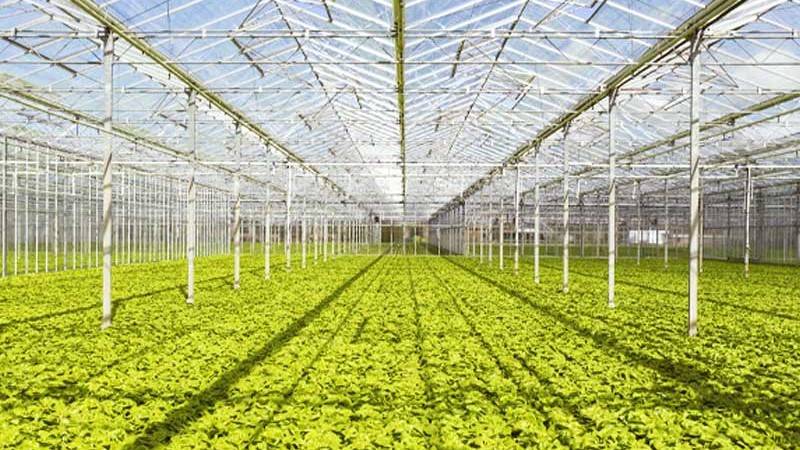Survival of Biologicals in PRO-MIX® Growing Media

AGTIV® STIMULATE™ (Bacillus), AGTIV® REACH™ (mycorrhizae) and AGTIV® AMPLIFY™ (a combination of Bacillus and mycorrhizae) are biologicals available premixed in different PRO-MIX® formulations. They work together to enhance plant performance, quality, and yield. The advantages of having these active ingredients premixed in the growing medium include their availability from the start of planting, the convenience of not having to add them during the crop cycle, and their consistent benefits to the crop throughout the growing season. PRO-MIX® products amended with AGTIV® technologies are easy to use, and most storage conditions are compatible with these biologicals. Because these are live organisms added to growing media, we often receive questions about their integrity, storage, and survival.
Optimized Plants: Using Living Organisms as Active Ingredients
Both groups of organisms occur naturally in soils and are not genetically modified. They have been selected through a screening process for their growth-enhancing properties. Their modes of action are slightly different. Mycorrhizae are symbioses between a mycorrhizal fungus and roots. The fungus colonizes the roots, extending the root surface area, acquiring water and nutrients beyond the plant roots' reach, and transferring them to the plant. This accelerates rooting, improves fertilizer uptake, and increases plant resistance to stresses.
Meanwhile, Bacillus is a rapidly colonizing bacterium that grows around the plant root system, enhancing plant growth by fostering a healthy root environment. It optimizes the use of fertilizers and water, increases resistance to stresses, and improves plant strength and productivity, resulting in optimized plant growth rate and uniformity.
Mycorrhizae: Surviving in Difficult Temperatures
Mycorrhizae are defined as symbioses between plant roots and a fungus, benefiting both. The symbiosis, known as the "Arbuscular Mycorrhiza” type, is most common among vegetable and annual plants grown in greenhouses. In non-farmed environments, mycorrhizal fungi colonize almost 80% of plant species. These types of mycorrhizae do not occur naturally in peat moss and growing media; therefore, they are introduced into growing media.
Our mycorrhizae don't only colonize plants in PRO-MIX® but continue to colonize plant roots even after transplanting into the soil. They survive almost all temperature extremes and climatic changes from freezing to intense heat because they have very resistant cells, called “spores,” filled with lipids. These spores, similar to plant seeds, allow for long survival in the soil. When mycorrhizae are added to growing media, the storage temperature changes are akin to those in soils. As storage temperatures drop in winter, the mycorrhizal fungi gradually prepare their cell walls for freezing temperatures, ensuring survival. Even high soil temperatures do not kill our mycorrhizae. Studies at Texas A&M University have shown that mycorrhizae remain functional in plant roots even at very high summer temperatures.
Mycorrhizae added to PRO-MIX® growing media are viable for up to 2 years in storage, including exposure to freezing temperatures. However, when mycorrhizae are sold as inoculants, they are more fragile, with a narrower storage temperature range because mineral carriers used in inoculants do not insulate as well as peat moss, bark, and coir in growing media.
Comparison of AGTIV® STIMULATE™ (Bacillus) and AGTIV® REACH™ (mycorrhizae)
| Description | AGTIV® STIMULATE™ (Bacillus) | AGTIV® REACH™ (mycorrhizae) |
|---|---|---|
| Beneficial Organism | Growing media containing the bacterium Bacillus pumilus PTB180 | Growing media containing the endomycorrhizal fungus - Glomus intraradices PTB297 |
| Growth Enhancement | Plants planted directly in growing media benefit from enhanced root health, which supports robust growth. | Plants planted directly in growing media have improved growth, even when exposed to nutrient or drought stress, particularly noticeable towards crop maturity. |
| Colonization time | 24-48 hours to colonize plant roots. | 2-4 weeks to colonize plant roots. |
| Storage temperatures | Not impacted by freezing, thawing, or temperatures below 120°F. | Not impacted by freezing, thawing, or temperatures below 110°F. |
| Impact of rapid temperature fluctuations | No impact | Freezing and thawing of growing media is gradual to allow mycorrhizae to acclimate to temperature changes. |
| Shelf-Life* | 2 years from the date of manufacturing. | 2 years from the date of manufacturing. |
*Although active ingredients have a shelf life of 2 years from the date of manufacturing, it is best to use growing media within 9-12 months for peat-based media and 6 months for peat-bark growing media.
AGTIV® STIMULATE™: An Effective and Resistant Strain of Bacillus
Premier Tech currently offers Bacillus pumilus bacteria in the PRO-MIX® with AGTIV® product line. These bacteria have the same tolerance to storage temperatures as previously mentioned. Bacillus has been selected to support a healthy root zone, which in turn, enhances plant growth. Many tests confirm that the strain can survive in prolonged storage temperatures up to 120°F and well below freezing. Extensive research shows that these bacteria can survive long periods at various temperatures.
Most other biological products available on the market utilize different types of microorganisms. While many can support plant health, they often need to be re-applied, require controlled storage conditions before use, and are more susceptible to viability loss from heat and frost because they lack the hardy, spore-like structures that Bacillus bacteria possess. Manufacturers of these other products also recommend shorter storage periods when incorporated into growing media.
Premier Tech recommends using PRO-MIX® peat-based growing media within 9-12 months or peat-bark-based growing media within 6 months after manufacturing. This is mainly due to the natural biodegradation of the wetting agent added to the growing medium, which facilitates water absorption.
References:
- Carpio, L., F. T. Davies, M.A. Arnold, 2003. "Effect of commercial arbuscular mycorrhizal fungi on growth, survivability and subsequent landscape performance of selected container grown nursery crops." J. Environ. Hort 21(4):190-195